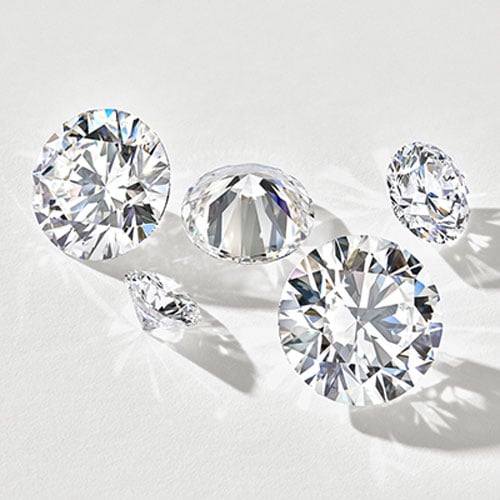Lab Grown Diamonds vs. Real Diamonds: A Comprehensive Guide
Introduction
Diamonds have long been considered a symbol of luxury and timelessness. But with advancements in technology, lab-grown diamonds are entering the market, challenging the traditional perceptions of real diamonds. In this guide, we’ll explore what lab-grown and real diamonds are, how they differ, and which might be the right choice for you.
What Are Lab-Grown Diamonds?
Lab-grown diamonds, also known as synthetic diamonds, are diamonds created in a controlled environment rather than formed naturally. They possess the same physical, chemical, and optical properties as natural diamonds but are produced using advanced technological processes.
What Are Real Diamonds?
Real diamonds, or natural diamonds, are formed over billions of years deep within the Earth’s mantle under extreme pressure and temperature lab grown diamonds vs real diamonds. These gems are mined from the Earth and are valued for their rarity and natural origins.
The Process: How Each Type is Made
Creating Lab-Grown Diamonds
High Pressure High Temperature (HPHT)
The HPHT method mimics the natural conditions under which diamonds form. Carbon is subjected to high pressure and temperature in a lab setting, creating diamonds that are virtually identical to natural ones. This process is precise and allows for the production of diamonds with minimal inclusions and impurities.
Chemical Vapor Deposition (CVD)
CVD involves breaking down carbon-rich gases in a vacuum chamber to deposit carbon atoms onto a substrate. These atoms then crystallize into diamond structures. CVD diamonds often exhibit fewer inclusions and can be produced in various colors and sizes.
Natural Formation of Real Diamonds
Geological Conditions
Real diamonds form in the Earth’s mantle under intense pressure and heat. Carbon atoms bond in a crystal structure over millions of years. These diamonds are then brought to the surface through volcanic eruptions or tectonic movements.
Mining Process
The mining of natural diamonds involves extracting kimberlite pipes or alluvial deposits. This process is labor-intensive and environmentally challenging but is crucial for sourcing these precious stones.
Quality Comparison
Physical Properties
Hardness and Durability
Both lab-grown and natural diamonds score a 10 on the Mohs scale of hardness, making them the hardest known material. This ensures they are incredibly durable and suitable for daily wear.
Clarity and Color
Lab-grown diamonds can be engineered to be virtually flawless, while natural diamonds may contain inclusions and imperfections. Both types can come in a range of colors, though lab-grown diamonds offer more control over color variations.
Certification and Grading
Gemological Institute of America (GIA)
GIA is a leading authority in diamond grading. They assess diamonds based on the 4 Cs: Cut, Color, Clarity, and Carat weight. Both lab-grown and natural diamonds can be graded by GIA, providing a standardized measure of quality.
International Gemological Institute (IGI)
IGI is another reputable organization that certifies both lab-grown and natural diamonds. Their grading system helps ensure that buyers receive accurate information about the diamonds they purchase.
Cost Analysis
Price Differences
Lab-grown diamonds are generally more affordable than natural diamonds. The cost difference can be significant, allowing buyers to purchase larger or higher-quality stones within the same budget.
Value for Money
While lab-grown diamonds offer great value for money, natural diamonds are often considered more prestigious due to their rarity and historical significance.
Lab created diamonds, also known as synthetic or cultured diamonds, are gaining popularity as a stunning and ethical alternative to natural diamonds. These gems are produced using advanced technological processes that replicate the natural conditions under which diamonds form in the Earth. There are two primary methods for creating these diamonds: High Pressure High Temperature (HPHT) and Chemical Vapor Deposition (CVD).
Ethical and Environmental Impact
Environmental Concerns
Lab-grown diamonds have a lower environmental impact compared to traditional diamond mining, which can cause significant ecological damage. Lab-grown diamonds offer a more sustainable alternative.
Ethical Considerations
Lab-grown diamonds are free from the ethical concerns associated with conflict diamonds, which are mined in war zones and sold to finance armed conflict. Choosing lab-grown diamonds can align with ethical purchasing values.
Consumer Preferences
Aesthetic Appeal
Aesthetic preferences vary from person to person. Some may prefer the traditional allure of natural diamonds, while others might appreciate the modern, controlled perfection of lab-grown diamonds.
Emotional Value
Natural diamonds carry a sentimental value tied to their natural origins and rarity. Lab-grown diamonds, while identical in appearance, may lack the same emotional weight for some buyers.
Resale Value
Lab-Grown Diamonds
Lab-grown diamonds typically have a lower resale value compared to natural diamonds. This is due to their relatively recent market presence and the ease of their production.
Real Diamonds
Natural diamonds generally retain their value better over time. Their rarity and historical significance contribute to their higher resale value.
Choosing the Right Diamond for You
Factors to Consider
Purpose of the Purchase
Determine whether the diamond is for an engagement ring, a piece of jewelry, or an investment. This can guide whether a lab-grown or natural diamond suits your needs.
Personal Values
Consider your personal values regarding environmental impact, ethical sourcing, and budget. This will help you make an informed decision aligned with your preferences.
Conclusion
Choosing between lab-grown diamonds and real diamonds involves considering several factors, including the production process, quality, cost, ethical implications, and personal preferences. Both options offer unique benefits and appeal, so the right choice ultimately depends on your individual values and needs. Whether you opt for the advanced technology of lab-grown diamonds or the timeless allure of natural diamonds, you’re investing in a gem that represents a significant moment in your life.
